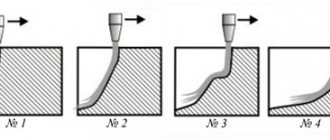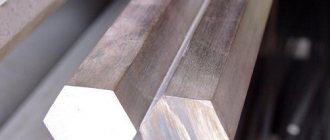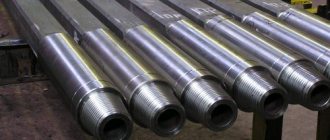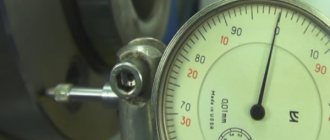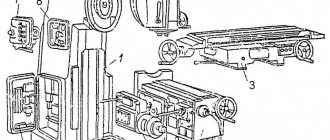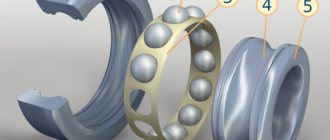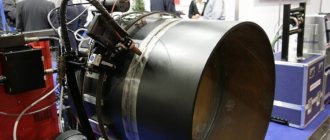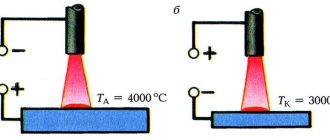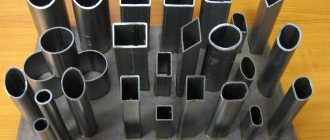Operating principle of a scraper conveyor
During the product transport process, only one part of the constantly rotating chain is always involved. Along its entire length, at equal distances from each other, scrapers are placed. They push the load towards the tension station, move it along the bottom of the chute and push it out to the place where the material is unloaded. The web then returns to the top through the drive station.
If the scraper conveyor is horizontal, the product layer may exceed the height of the scrapers. This will not prevent the lower and upper layers from forming a single flow, the maximum possible height of which depends on the factors listed below.
- Product density. If the density is high, then the friction between the layers of material will be insignificant and transportation will be faster.
- External friction. This factor depends not only on the properties of the load, but also on the quality of the walls of the gutter.
- Internal friction. The smaller the product particles, the lower this figure.
Consequently, the speed of movement of the material will be lower near the walls of the trench (due to additional contact with them) and higher in the center of the flow. If a vertical scraper conveyor or elevator is used, the weight of the product must also be taken into account.
Screw conveyor calculation
To calculate auger performance, two more indicators are needed.
ρ
is an indicator of the density of the material. It is expressed in tons per cubic meter (t/m3)
C
– this is a coefficient that depends on the angle of inclination of the conveyor relative to the horizon; there is a table with these values. So C for a horizontal conveyor is 1, for a housing with an inclination of 20° - 0.65.
The productivity of a screw conveyor is designated as Q. The calculation is based on this formula:
Q = 47D2tnψpC
Application of screw conveyors
VGP pipe: explanation, description, advantages and scope of application
There are a number of areas in which screw conveyors are used: agricultural enterprises, large industrial complexes and processing enterprises, warehouses. For example, screw conveyors are used in the process of loading operations at granaries, grain elevators and mill enterprises, cereal factories, sugar factories, etc. To produce equipment used in food industry enterprises, stainless steel and technical polymers are used, which prevent the oxidation of transported products.
They are also installed in the premises of flour mills and bakeries, feed factories, etc. for transporting raw materials within workshops. Not a single large enterprise in the chemical, coal, or mining industries can do without such equipment. Screw conveyors transport raw materials at enterprises producing building materials and mixtures and in machine-building shops. It is not recommended to use such equipment for transporting materials with a sticky consistency, dense or highly abrasive materials.
Advantages of screw conveyors
The screw has become widespread in industry due to a number of advantages that will help speed up and modernize production:
- the closed transport housing allows maintaining high tightness of the system;
- the auger is suitable for hot, dusty and toxic materials;
- on the outside, all moving elements are protected by the housing;
- such a conveyor is more compact and easy to use compared to belt and plate devices;
- it is safer to operate and easier to maintain.
Small and dusty cargo is completely stored inside the housing, which minimizes product losses. Inclined units will help save space, because they require less space with the same length (compared to horizontal conveyors). Screw conveyors consist of separate parts and are connected to each other by flange connections. In this way you can easily change the length of the conveyor. Stainless steel, from which all parts of the units are made, prevents oxidation of the transported product.
The compact dimensions of the mechanisms make them possible to integrate into various types of production.
Working principle of a screw conveyor
Scope of iron
A conveyor with a screw mechanism operates as follows:
- bulk material enters the storage hopper or directly into the inlet pipe;
- the rotating propeller blades capture portions of the cargo and push it towards the outlet pipe;
- upon reaching the outlet, the load leaves the mechanism through it.
The screw is driven into rotation by a drive device consisting of an electric motor and transmission. On some models designed for work in places where there is no power supply, the conveyor can be equipped with an internal combustion engine. The transmission is a belt drive or gear reducer.
The screw conveyor can be equipped with an electronic control system, the sensors of which monitor the level of the product in the output storage and control the rotation speed of the electric motor and the transport screw, maintaining the level within the specified values.
The conveyor, equipped with a screw mechanism, is designed for long or continuous operation.
Methodology for calculating key indicators
Tsam alloys - composition, properties and scope of application
To produce screw conveyors, it is necessary to perform a large amount of design and technological preparation. It includes the production of product drawings, the construction of its kinematic diagram, and engineering calculations.
To calculate a screw conveyor, it is necessary to take into account the main parameters. These include:
- Spiral pitch t. depends on the specific gravity ρ of the transported substance; with increasing density, the step must be reduced.
- Shaft rotation speed n. For light loads, the speed reaches 120 rpm; for dense and viscous loads, the speed must be reduced to 30 rpm.
- Screw diameter d. also decreases with increasing specific gravity and viscosity.
- The gutter filling rate ψ, depending on the density of the material, ranges from 15 to 40%.
- C - correction for the elevation angle, for horizontal devices C = 1, for vertical screw conveyors the value is taken from the tables;
The performance of the screw mechanism is calculated using the formula:
Engine power sufficient for reliable operation of the conveyor with a given performance is determined by:
- mass of the shaft with blades;
- weight of the load in the pipe;
- linear speed of movement;
- a number of correction factors for friction.
Finally, the power is determined taking into account the efficiency of the gearbox and adding the standard power reserve required to start a conveyor filled with cargo.
Screw conveyor - design and device
The design of the screw conveyor may vary depending on the model, but the operating principle is the same. The installed helical screw moves the loaded material as a result of its rotation. The device is powered by turning on an electric motor. The design is also equipped with a gearbox and drive shaft, which are responsible for transmitting traction force. The efficiency of the material transportation process depends on the design of the installed propeller (bladed, belt, solid or shaped), its diameter and pitch variability. The shape of the screw matches the type of load being moved. The direction of the spiral (left- or right-handed) also affects the performance of the conveyor. Augers can withstand high loads and intensive work, but the conveyor model must be selected based on the type of material being transported.
Cylindrical screw conveyors have a modular structure that allows you to adjust the length of the equipment. The housing modules are fastened to each other using intermediate flanges, and the installation of intermediate supports makes it possible to extend the spiral. Troughed conveyors have a sectional body, the length of which can be increased in accordance with production needs. Such equipment is equipped with intermediate supports and couplings.
Screw conveyor device
The screw-based feeder is characterized by a simple design: a minimum of moving and replaceable parts.
The device consists of the following parts:
- inlet pipe - a window through which raw materials enter;
- conveyor body - a cylindrical pipe, closed or open, with an upper recess;
- screw - the basis of the device;
- an electric drive that sets the rotation of the screw;
- V-belt or gear transmission;
- discharge pipe.
The main element, the screw, is most often made of steel. The propeller blades are made from steel sheet and are mounted on a steel shaft pipe. If the material being moved is abrasive, it is possible to use more durable materials, such as cast iron.
If the auger has a significant length, it is mounted on supports that protect it from sagging.
The body of a screw conveyor is usually made of sheet steel by welding two halves of a pipe. There is a gap of 5-10 mm between the edge of the spiral and the inner surface of the housing.
The device can also be supplemented with electronic control, which sets the rotation speed of the auger depending on the filling of the receiving hopper.
Types
The most common types of conveyors are:
Screw (auger) conveyor
consists of a groove and an Archimedean screw located in it; used for bulk solids.
- Rope conveyor
- Oscillating Conveyor
used for small objects rolling or sliding on an inclined swaying surface.
Bucket Conveyor
the load-carrying part of the conveyor is buckets, the suspension axis of which passes through the middle point, which allows them to swing; for transporting bulk materials (coal, crushed stone, slag, clinker), buckets are installed with an overlap without gaps, in contrast to mechanisms for gravity loading, like elevators.
Belt Conveyor
consists of an annular belt, tension and drive drums and support rollers; It is usually used for transporting bulk substances; modifications are possible (tubular, z-shaped, rotatable by 90 and 180 degrees) due to the deformation of the belt.
Conveyor with modular belt
consists of a plastic (polyurethane, polypropylene, polyacetal) tape, tension and drive unit with sprockets; used for transporting bulk substances, piece goods, and open products. Conveyors with a modular belt can have a different movement path: rotary, zigzag, spiral.
Plate Conveyor
the load-carrying part of the conveyor is the plates;
- consists of two parallel circuits connected to each other by plates.
- special plastic or stainless steel chains
Pneumatic conveyor
conveyor, the traction of which is provided by air flow
- consists of a tube and closed containers moved along it, tightly adjacent to the walls;
- Bulk material moves in the air flow as a suspension (air chute).
Overhead conveyor
differ in that the moving bodies do not lie, but hang on load-carrying fasteners, and the conveyor mechanisms themselves are also suspended.
Roller conveyor (roller conveyor)
consists of rollers fixed to a frame, individual rollers can be driven, or the entire frame is inclined, as is the case with a gravity roller conveyor; used for large solid objects.
Scraper Conveyor
consists of a chute and scrapers moving bulk material along it, usually attached to a ring chain; unloading can be carried out either at the end of the conveyor or through openings in the chute.
Spiral conveyor (flexible)
consists of a groove and a spiral located in it; used for bulk solids, higher productivity compared to a screw conveyor. consists of a chute and a (wire, ring) rope on which metal discs are attached that move a non-abrasive material (for example, coal) inside the chute.
Trolley conveyor
used for moving assembled and welded units in production lines. When using a floor-mounted trolley conveyor, it is advisable to use trolley platforms for mounting assembly and welding equipment on them.
Walking Conveyor (Stepping Conveyor)
used for moving assembled and welded units in production lines. When using a floor-mounted trolley conveyor, it is advisable to use trolley platforms for mounting assembly and welding equipment on them.
Varieties
There are different types of screw . They are of a closed type (pipe) or open type (gutter), and can also differ in their length or pipe diameter. They differ in the way the screw rotates, stationary and movable in the direction of rotation, low-speed and high-speed. To correctly select the right type of screw conveyor, you should take into account what materials will need to be moved, the direction, the productivity of the equipment, the distance over which it is planned to move the materials and what will serve as the receiving tray, how the materials will be loaded.
With the help of inclined units, you can save space; compared to horizontal screw conveyors with the same length, inclined conveyors take up much less space. Mobile screw conveyors have a collapsible design, they can be disassembled and transported to another place of work. All parts of the screw unit consist of separate parts, all these parts are connected to each other by flange connections. This allows you to change the length of the conveyor. The use of screw conveyors made of stainless steel in the food industry eliminates the possibility of oxidation of food products.
Closed conveyor
- A closed-type screw unit consists of a sealed pipe in which a screw is mounted. This auger rotates using an electric motor. Such augers can be solid, shaped or belt, it all depends on the type of blades. The blades determine the performance of the conveyor and the type of material to be moved by this equipment. At the end of the device, in its upper part, there is a receiving tray into which bulk materials are thrown. For safety reasons, such a tray must be equipped with a lid. Below at the other end of the conveyor there is another hole, this is the unloading pipe, and it is equipped with a valve. Holes that serve for filling bulk materials can be located at any distance of the conveyor pipe.
- Enclosed screw conveyors are waterproof as well as airtight and are therefore well suited for transporting dusty materials. They can be used both indoors and outdoors. Such equipment has high productivity and speed of movement of materials. The downside is the complexity of maintenance and repair work, because all the main mechanisms are hidden in the pipe.
Open screw conveyor
An open-type screw conveyor consists of a chute or half a pipe; a screw rotates inside the structure. There are also models of open conveyors in the form of a rectangular container. The screw blades of open conveyors, like closed ones, can be solid, shaped or belt; the screw is also driven by an electric motor. Such a conveyor is primarily suitable for indoor use in order to prevent the penetration of moisture, dust or debris into the materials being moved.
Using an open conveyor, it is recommended to move materials that are odorless and will not fly away or create dust during transportation. Unlike closed conveyors, open ones are easy to repair and maintain; all working parts are in a visible place.
Propeller speed
The installed electric motor and drive together can transmit different rotation speeds to the auger. Moreover, this indicator in most cases varies from 150 to 600 mm/min. The key points are the following:
- The highest rotation speed should be set when the material is light in weight. For heavy abrasives, the indicator decreases significantly, since otherwise the load on the main fastening elements increases.
- The normal pressure from the load corresponds to the frictional force that arises when the load comes into contact with the walls of the trench.
- The resistance that occurs when crushing and moving cargo in a conveyor is determined by practical determination.
A drive is also required, represented by a combination of gears or rollers with a V-belt drive. The indicator is changed as follows:
- If we consider the gearbox, then the gears must be replaced. It is difficult to carry out such work on your own; if errors are made in the calculations, there is a possibility of rapid wear of the structure.
- A combination of rollers with a V-belt drive is often found. This is due to the fact that when a serious load occurs, the belt slips. The indicator is increased or decreased by changing pulleys.
Manufacturers of such equipment, as a rule, indicate the rotation speed in the instructions for use.
Advantages and disadvantages
Screw conveyors have a fairly large number of advantages and disadvantages that must be taken into account. An example is that the productivity of a screw conveyor can be very high. The advantages include the following:
- Compact and simple design. Simplicity ensures maintainability and long service life. Compactness determines the possibility of integrating the mechanism into various systems.
- Complete safety of dusty cargo. At high productivity, the basic properties of the transported substance are preserved. Some conveyors, due to their operating principle, can compromise the integrity of fragile materials.
- Low cost is another reason why many decide to purchase and install a screw conveyor.
- The absence of external moving elements significantly increases safety in an industrial structure, and also expands the scope of application of the device.
- Easy to maintain and do-it-yourself maintenance.
However, there are also several significant disadvantages. For example, the performance of a screw is ensured only with a high power consumption. In addition, the length of the device is limited to a small range. When transporting large cargo, there is a possibility of its partial crushing. Long-term operation of the conveyor can cause wear of the main part, which is due to the constant movement of the load. This is why the conveyor has to be serviced periodically. The coefficient for calculation is taken depending on the main parameters of the screw and other structural elements.
https://youtube.com/watch?v=epuGmAuUxQs
Advantages and disadvantages of using screw conveyors
Screw conveyors have a number of important advantages:
- High safety of use. The absence of external moving parts minimizes the risk of personal injury.
- Small dimensions make it possible to easily integrate the device into production lines and technological installations, and move loads between rooms and between levels.
- Closed-type units are indispensable when working with substances that are toxic and prone to dust formation. All connections are easily sealed with gaskets.
- Suitable for moving both heated and cooled loads.
- The simplicity of the design determines the affordable prices for such equipment.
They also have a number of disadvantages:
- Changing the structure of transported cargo. In the conveyor, it experiences friction against the walls and blades, and can grind and wear out.
- Movement distance limited by design features.
- Rapid wear of working parts and housing, especially when working with abrasive materials.
Installation of screw conveyors
In order for the screw conveyor to work productively and without annoying failures, attention should be paid to the correct choice of location for its installation and installation and configuration of the unit. https://www.youtube.com/embed/7hABui18lQw
The device should be placed on a level, reliable base to prevent it from falling or being systematically soiled.
A very important stage in preparing the unit for operation is its installation. The installation requirements outlined in the assembly manual must be strictly followed. Such work should be entrusted to qualified assemblers who already have experience in working with under-face mechanisms. Violation of the assembly order, installation dimensions and other errors can lead to the following consequences:
- shocks and vibration when turned on and during operation;
- drop in rotation speed, torque, performance;
- accelerated wear of main parts, frequent repairs;
- reduction in service life.
It is recommended to carry out the assembly and installation of horizontal and vertical screw conveyors in two stages.
The first one is preparatory. within its framework the following operations are performed:
- checking the packaging according to the shipping lists of the manufacturing plant;
- re-preservation of mothballed units and parts;
- initial assembly of large units from individual parts;
- preparation of the installation site, including electrical installation work.
After completing the preparation, you can move on to the main stage, which includes work such as:
- installation of lifting and rigging devices;
- supply of large-unit assemblies to the installation site;
- installation of the unit base;
- installation of other parts with mandatory control of inclination angles and installation dimensions;
- checking the correct assembly, turning the screw manually;
- connecting power supply, setting operating parameters and fine adjustment.
First, a test run is carried out without load. If everything is working normally, the blades do not touch the pipe, no extraneous sounds or impacts are heard, you can test the device under load.
Classification of screw conveyor
The most common classification of this type of conveyor is based on the shape of the screw. There are 4 types of screw conveyors:
- Solid. It is the most popular. Presented in the form of sections welded to the shaft. To ensure that the direction of the screw does not change, trunnions on bearings are installed every 3 m, which are designed to support the screw. This type of unit is designed for moving materials that are not subject to caking.
- Screw. Its propeller has the shape of a blade and is used to move those substances whose transportation must be combined with their mixing or loosening.
- Shaped. It has a similar purpose and can mix the material no less efficiently thanks to various cutouts on the screw blades. Its use is also optimal when it is necessary to wet raw materials.
- Tape. Its design is represented by a shaft and a spiral strip, between which there is a gap. This scheme allows the load to move during rotation without rolling or mixing. However, the productivity of units of this type is low, since the screws have a small diameter and often become clogged.
Definition, application and classification of screw conveyors
A screw conveyor is a transport mechanism for moving bulk, dusty or powdery goods. The main working part of such a conveyor is an auger (screw rod), which rotates in a stationary chute and moves cargo from the loading compartment to the unloading compartment.
The screw conveyor consists of the following elements:
- frame;
- shaft;
- screw;
- supports (end and intermediate);
- openings (loading and unloading);
- electric motor;
- gearbox;
- flanges;
Due to their simple design, efficiency and reliability, screw conveyors are used in many enterprises in the flour-grinding, chemical, feed milling and other industries. However, we must warn you that it is not rational to transport highly abrasive, sticky, and loads subject to compaction using augers.
Screw conveyors are classified:
- by the slope of the gutter (vertical, horizontal, steeply inclined, gently inclined);
- in the direction of the spiral;
- by diameter and variable pitch of the propeller;
- according to the design of the propeller (solid, tape, bladed, shaped).
The shape of the screw depends on the type of load being moved.
Types of screw conveyors
Type of shell
- Open - in this case, the upper sector in the cylindrical tube of the body is removed. Control and maintenance of the auger becomes easier, but only horizontal installation is possible. The open body conveyor is suitable for enclosed spaces and for materials that do not generate a lot of dust.
- Closed is the most common type of enclosure and can be easily made airtight. Closed housing augers are well suited for bulk solids with a lot of fine dust. Suitable for outdoor installation.
By shaft type
- Single-pass - on such a shaft the blades form only one spiral;
- Two-way - there are 2 independent spirals on the shaft.
By installation position
- Inclined;
- Horizontal;
- Vertical.
Types of auger screws used in conveyors
The screw is the main working part of the device. Its shape and material used for manufacturing depend on the specific purpose of the unit.
The main screw designs used are as follows:
- Solid. Stamped steel segments are connected into a single spiral and installed on the shaft using welding or threaded connections. Used for transporting fine and medium-grained powdery substances that are not prone to caking. The pipe is filled with a load by 30-40%, the rotation speed is from 50 to 120 rpm.
- Tape. It differs from a solid screw in that there are gaps left on the shaft side. They provide lower productivity due to the fact that the load partially falls back through the slots. This design is used for media prone to caking and ensures their mixing and crushing of compacted lumps during transportation. Can handle gravel, crushed stone and similar materials. The gutter filling rate is 24-40%, rotation speed is from 25 to 100 rpm.
- Bladed. The propeller is divided into separate blades. They walk at equal pace. Simultaneously with the supply of material, the blades loosen and mix it. Used for feeding lump materials, the chute is filled by 25-35%, rotation speed is from 40 to 100 rpm. Also used for moving wet media such as cement mortar or moistened clay. In this case, the filling is 15-25%, the rotation speed is from 30 to 60 rpm.
- Shaped The solid profile of the screw is complemented by shaped cutouts and protrusions on the outer edge. Performs a number of operations at once, such as moving, grinding, stirring. Suitable for concrete, asphalt and clay mixtures. The gutter is filled by 15-30%, rotation speed is 30-60 rpm.
Essential elements
The mechanism under consideration for transporting bulk materials consists of a fairly large number of different elements. The screw conveyor scheme is characterized by the following features:
- As previously noted, screw conveyors move bulk materials. That is why an important design element can be called a screw or auger. It receives force from the drive and transmits force to the material itself. There are quite a large number of different versions of augers: shaped, solid, belt, bladed and others. The performance characteristics of the device largely depend on the shape.
- Solid screws, which are assembled by connecting sections, have become quite widespread. Sheets with a thickness of 2-5 mm are used as the main material. The basis is a hollow shaft.
- The robust screw shaft can withstand a very high degree of impact. That is why it is made up to 50 meters long. However, the required operating conditions can only be ensured by fastening at several points.
- The gutter is represented by a body, which is often made using a metal sheet 2-8 mm thick. As previously noted, the lower part resembles the shape of a half-cylinder. The main parameter can be called the capacity of the structure.
- On the end sides there are special holes intended for installing bearings.
- The gutter is closed with a lid, thereby ensuring the required degree of tightness.
- The main part of the structure can be assembled from several separate sections. The width of the cylindrical part can vary from 5 to 10 meters. The rigidity of the structure can be significantly increased by placing a large number of stiffeners.
- Bearings can also be located in the middle part, which increases the degree of screw fixation. Tail bearings are designed to support radial loads only.
- The drive of a screw conveyor is represented by a combination of a fairly large number of different elements that are designed to change the parameters of rotation and its transmission. The main element is an electric motor, which is connected to a gearbox or a system of pulleys and gears. In most cases, the drive is responsible for reducing the number of revolutions and increasing the transmitted force.
The dimensions of the screw conveyor window are selected depending on what substance will be transported.
Our offers
At the request of the customer, Rosrezinotekhnika LLC will manufacture a screw conveyor in various configurations. You can buy a screw conveyor from us:
- With a screw consisting of a shaft with turns of a transport screw with a diameter of 160 mm - 600 mm;
- With a solid helical spiral or with a spiral in the form of rigidly fixed blades;
- With a total length from 2 to 50 m;
- With productivity from 2 to 100t/h.
We manufacture a screw conveyor in sections; depending on the customer’s technical specifications, it may have supports (end and intermediate), drives, and nozzles (loading and unloading). Also, at your request, we will produce a system of conveyors with a common drive for transporting goods on screw conveyors.
At our enterprise you can also buy a screw feeder. This is a continuous motion screw machine related to screw conveyors and designed for dosed supply of cargo. The difference between a screw feeder and a conveyor lies in its functions. It is mainly used as an addition to a conveyor to control portions of transported cargo.
Screw conveyors are an effective solution to your problems in loading and unloading operations.
Download:
Questionnaire for screw conveyors
Technical parameters of screw conveyors
Auger – screw conveyor – industrial mechanism used for transporting dusty, bulk, small-piece materials. The main working body is a propeller with blades located in a chute. When the screw rotates, the load moves inside the chute. As a rule, cargo is moved over relatively short distances, within 40 m in the horizontal plane, and up to 30 m vertically, with a productivity of up to 100 t/h.
Screw conveyors are used in various industries: flour milling, food and construction, at power plants; for moving low-abrasive, powdery loads, sand, coal dust, gypsum and other materials. They are also used in the chemical industry, since simple sealing of the chute is possible, the conveyor can transport chemically harmful substances. Also suitable for use as dispensers and mixers. Can be used in mechanical engineering for transporting waste chips from machines to workshops. Not intended for use when it is necessary to transport highly abrasive, sticky or highly compacted loads. Standard diameters of screw conveyors are 120, 160, 200, 250, 320, 400, 500 mm. In cases where the movement of medium-sized cargo is required, conveyors with a diameter of 650 or 800 mm are produced. Depending on the type of cargo intended for transportation, the optimal shape of the screw is selected. Classification parameters for screw conveyors : 1. inclination of the trough - horizontal - vertical - flat inclined - steep inclined 2. spiral direction 3. screw diameter and pitch variability
4. The design of the screw is solid. They have the most frequent use. Assembled from steel sections welded to a hollow shaft. Used when transporting powdery, small-sized dry materials. -lobed. Along the helical line there are blades that move, loosen and mix the loads. -tape. The screw is a narrow spiral strip; there is a gap between the shaft and the inside, due to which the load is transferred over the turn for the purpose of mixing. Used when transporting lumpy and sticky material. - shaped. There are cutouts on the outer edge of the screw surface. They are used for transporting caking loads, as well as for mixing or crushing materials.
The speed of rotation of the screw depends on its diameter, abrasive properties and the type of product being moved. The smaller the diameter and density of the material, the higher the rotation speed. The gutter in the lower part is made in the shape of a half-cylinder, turning into straight vertical walls. Suspended bearings support the screw in its middle part. The gutter has a cover; To transport harmful materials, the lid is made airtight. The lid has holes for loading and inspection hatches. Unloading hatches are provided at the bottom of the chute. The drive has an electric motor and gearbox, connected to the shaft by elastic and equalizing couplings. The drive is placed on the frame, and in order for the screw to work in tension, the head bearing is mounted in the unloading part of the conveyor. Loading of screw conveyors is carried out using transport vehicles or from bunkers through transfer pipes.
Horizontal screw (screw conveyor) Has a drive, a drive shaft with turns of the transport screw, a chute, a loading and unloading device. The material is loaded through the holes in the chute cover and when the screw rotates, the load moves along the chute. The gravity of the load and its friction against the chute prevents unnecessary rotation of the load along with the screw. The screw screw is made with one-, two- or three-thread, with a right or left direction of spiral motion. It has end and intermediate bearings on which the propeller shaft is mounted. The end bearings are fixed in the vertical walls of the trench, the intermediate ones are strengthened in the form of a suspension from above on strips.
Vertical screw It has a shaft suspended on a thrust bearing with solid screw turns and a horizontal short screw - feeder, both screws rotate in the pipe using a drive device. The material is supplied in the lower section of the vertical screw. The conveyor is unloaded through a pipe at the top of the pipe. Used for lifting granular and powdery materials to a height of up to 30 m. The vertical auger has small dimensions, unloading is carried out in any direction. Also used as drilling rigs.
Advantages of screw conveyors : – simplicity of design – tightness – ease of technological maintenance – small dimensions of the device – convenience of intermediate unloading – complete safety of dusty products
Disadvantages of screw conveyors : – high energy consumption – crumbling and grinding of material – increased wear of the screw and chute – short transportation length – sensitivity to overloads, which leads to the formation of accumulation of material inside the chute.
Occupational Health and Safety
To avoid malfunctions of equipment and accidents that could damage the safety of material assets and the health of personnel, you should strictly follow the requirements of safety regulations when working with screw-type conveyors:
- regularly check the qualifications of personnel authorized to work on auger equipment;
- equip the mechanism with a fence that prevents unauthorized access to the work area;
- when using inclined screw conveyors, the entire area of its projection must be fenced;
- use personal protective equipment, protective gloves, a respirator (when working with dusty materials), safety glasses, durable overalls and shoes;
- when moving dusty materials, it is necessary to regularly check the quality of sealing of all pipeline joints in order to prevent the formation of an explosive suspension; in addition, exhaust ventilation must be working in the room;
It is strictly unacceptable to carry out service and repair work without turning off the power to the unit.
Auger – screw-type conveyor for transporting bulk cargo
Screw feeders are designed to move bulk materials over relatively short distances - up to 10-15 meters. It is advisable to use this technique when working with large volumes of products. The use of conveyor units allows minimizing labor costs. This makes it possible to free enterprise employees from the hard work associated with moving materials using buckets, wheelbarrows and other devices. Auger equipment has a fairly high productivity and is capable of moving several tons of cargo within an hour. Due to their relatively simple design, such units are easy to repair and operate trouble-free for several years.
